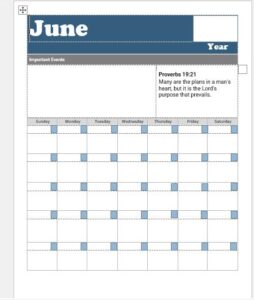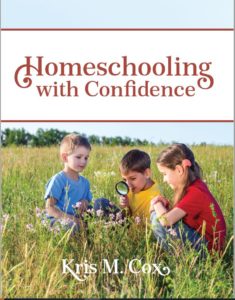As a parent, you probably have realized that even if children are raised in the same environment, they can still be totally different in the way they approach life – each child is unique in the way they think and act. Even identical twins often have completely different personalities. We’re all created to be unique, one of a kind. Maybe God made us that way because he wanted to keep life interesting!
We have four children and each one has unique characteristics and interests. Bethany loves dogs and could sit and read for hours. Jordan is a logical thinker and likes doing physics experiments for fun! Joshua wanted to be moving as much as possible, and his learning had to be hands-on. Jonathan is a people person, and thrived on group learning! It was challenging to homeschool them, because what worked in teaching one might not have worked for another. I didn’t know about learning styles when we first started homeschooling… had I known, I would have done some things differently! As my kids got older and this information became available, I was able to use it in choosing curriculum and in the process of homeschooling them.
How about you? Have you had times when you were frustrated as you tried to teach a concept to your child and they just didn’t understand what you were teaching them? This can cause feelings of inadequacy as we teach our children. But in reality it might just be that we need to try a different strategy in the way we’re teaching them. The way we were doing it wasn’t necessarily wrong, but it may not have been the way our child learns most effectively. Each child is unique in the way they learn best. Although they can probably learn in other ways, if we can utilize their different strengths and preferences to help them understand difficult concepts, we are going to be further ahead in teaching them.
When we understand our child’s learning style preferences, we can teach the difficult concepts and subjects to them according to the way they learn best. This will increase their success and understanding and learning will become more enjoyable for both you and your child, and it can even impact your whole family as frustration levels go down and understanding improves.
I’m not advocating that you should only teach your child according to the way they learn best, they do need to know how to learn in a variety of learning situations and environments. But a child’s learning environment will be greatly improved when they feel understood, and can sense that you are trying to work with them and their specific learning bent, especially in the subjects that are difficult for them.
When people talk about learning styles, they are often referring to a person’s preferred learning modality, or the sensory method in which they prefer to learn. Learning styles are usually more related to a person’s natural strengths, their personality and the way they learn best. I’ll be going over both of these aspects of learning preferences in this two-part blog post.
So let’s go through the various learning modalities that a child might have in this first post:
Learning Modalities refers to the sensory method that a person prefers when learning information. (i.e. hearing, seeing, touching, moving)
- Visual learners:
 Visual learners learn best by seeing what they are learning. Reading, watching a DVD, or looking at colorful pictures are all helpful for the visual learner. They like power point presentations, videos, computer learning where they can read or see what they are learning. They may have difficulty with spoken directions and may be easily distracted by sounds.Things that help visual learners:
Visual learners learn best by seeing what they are learning. Reading, watching a DVD, or looking at colorful pictures are all helpful for the visual learner. They like power point presentations, videos, computer learning where they can read or see what they are learning. They may have difficulty with spoken directions and may be easily distracted by sounds.Things that help visual learners:
- Use flashcards to learn new words.
- Try to visualize things that you hear or things that are read to you.
- Write down key words, ideas, or instructions.
- Take notes while listening to someone teach
- Draw pictures to help explain new concepts and then explain the pictures.
- Color code things.
- Avoid distractions during study times.
Remember: they need to see things, not just hear things, to learn well.
Auditory learners learn best by hearing, listening and speaking. They understand and remember things they hear. They have an easier time understanding spoken instructions than written ones. They can learn better by reading out loud because they have to hear it or speak it in order to know it.
Things that help auditory learners:
- Use flashcards to learn new words; but read them out loud.
- Read stories, assignments, or directions out loud.
- Record them spelling words and then let them listen to the recording.
- Have test questions read to them out loud.
- Study new material by reading it out loud.
- Use music or rhymes with facts that you want to memorize.
Remember: they need to hear things, not just see things, in order to learn well.
III. Tactile or Kinesthetic Learners: 
Tactile or Kinesthetic learners learn best by touching and doing. They understand and remember things through physical movement. They are more of a “hands-on” learner who prefers to touch, move, build, or draw what they learn, and they tend to learn better with physical activity involved in the process. They need to be active and take frequent breaks. They frequently speak with their hands and with gestures, and may have a hard time sitting still.
Things that help kinesthetic learners:
- Do lots of hands-on activities like completing art projects, taking walks, or acting out stories.
- It’s OK to play with something, walk around, or move in some way while reading or studying, or listening to someone read to them.
- Use flashcards and arrange them in groups to show relationships between ideas.
- When learning spelling, have them trace words in sand, or on the carpet with their finger.
- Take short breaks throughout the school day.
- They enjoy using a computer for learning.
Remember: they learn best by doing, not just by reading, seeing, or hearing.
I’d encourage you to teach your children using all these learning modalities because they need to know how using all the senses. However, once you know what learning modality your child prefers, it might be helpful to teach new concepts using that modality and then use the other modalities to review it later.
Tomorrow I’ll post about learning styles and go into more depth on how children learn by looking at your child’s natural strengths, personality and the way they learn best.








Thank you for your encouragement and great information! I am impressed with your blog and the books and subjects you support and write about!
May God bless you and use you to bless even more people than you already have.
It was great to meet you at the homeschool convention.
Thank you Marie! It was great to meet you as well! I apologize for not replying sooner, I didn’t see your comments until today! Blessings to you as well as you homeschool your children!